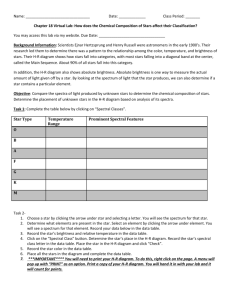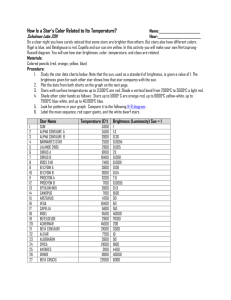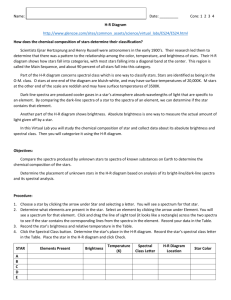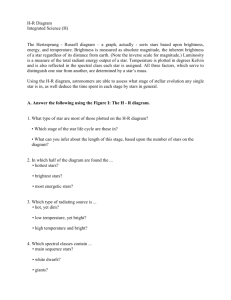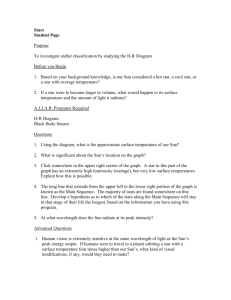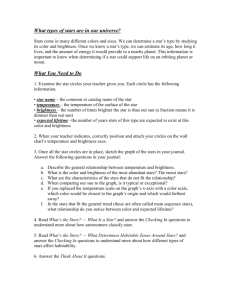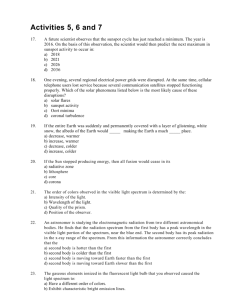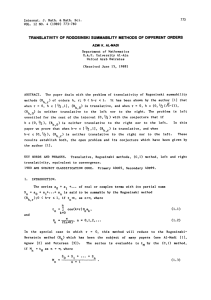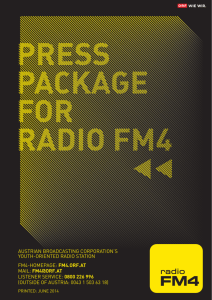Hertzsprung-Russell Activity
advertisement
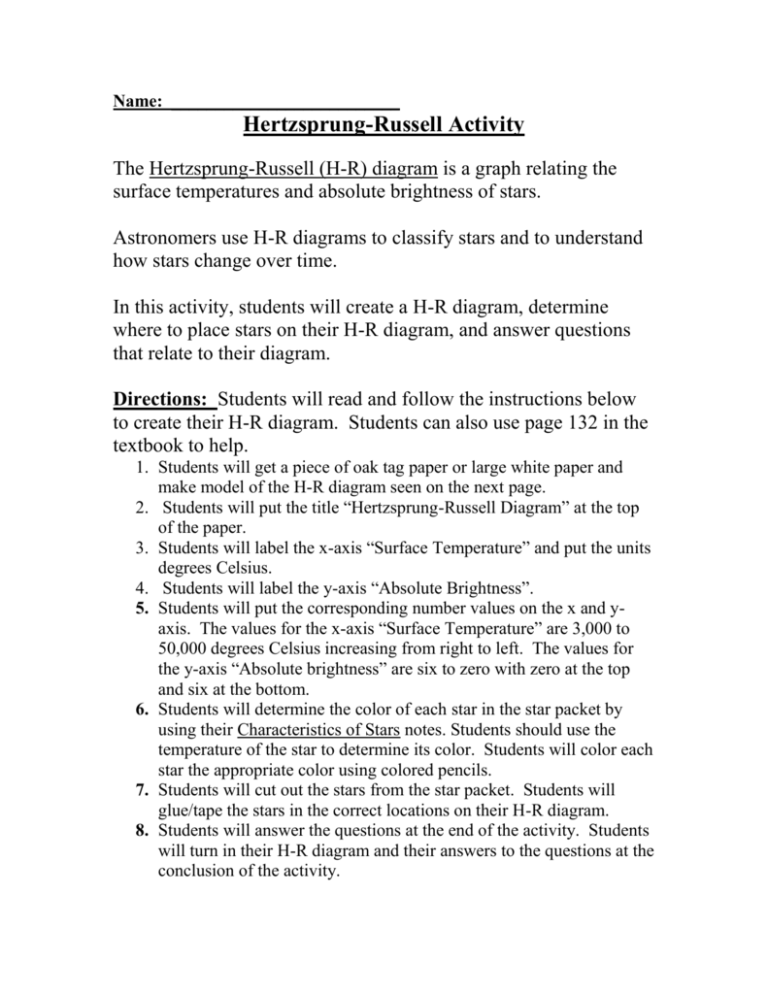
Name: __________________________ Hertzsprung-Russell Activity The Hertzsprung-Russell (H-R) diagram is a graph relating the surface temperatures and absolute brightness of stars. Astronomers use H-R diagrams to classify stars and to understand how stars change over time. In this activity, students will create a H-R diagram, determine where to place stars on their H-R diagram, and answer questions that relate to their diagram. Directions: Students will read and follow the instructions below to create their H-R diagram. Students can also use page 132 in the textbook to help. 1. Students will get a piece of oak tag paper or large white paper and make model of the H-R diagram seen on the next page. 2. Students will put the title “Hertzsprung-Russell Diagram” at the top of the paper. 3. Students will label the x-axis “Surface Temperature” and put the units degrees Celsius. 4. Students will label the y-axis “Absolute Brightness”. 5. Students will put the corresponding number values on the x and yaxis. The values for the x-axis “Surface Temperature” are 3,000 to 50,000 degrees Celsius increasing from right to left. The values for the y-axis “Absolute brightness” are six to zero with zero at the top and six at the bottom. 6. Students will determine the color of each star in the star packet by using their Characteristics of Stars notes. Students should use the temperature of the star to determine its color. Students will color each star the appropriate color using colored pencils. 7. Students will cut out the stars from the star packet. Students will glue/tape the stars in the correct locations on their H-R diagram. 8. Students will answer the questions at the end of the activity. Students will turn in their H-R diagram and their answers to the questions at the conclusion of the activity. EXAMPLE Hertzsprung-Russell Diagram Absolute Brightness 0 1 2 3 4 5 6 50,000 oC 20,000 oC 10,000 oC 6,000 oC Surface Temperature oC 5,000 oC 3,000 oC Name: __________________________ Hertzsprung-Russell Activity Questions Use the H-R diagram that you created to answer the questions below. Answer the questions in complete sentences. 1. Which star is a red supergiant that is very bright? 2. Which star is dim with a surface temperature of 30,000 oC? 3. Are the brightest stars always the hottest? Explain. 4. What is the relationship between surface temperature and brightness for main sequence stars? Use pages 132-133 in the book for help. 5. Could a star’s placement on the Hertzsprung-Russell diagram change? 6. The star Procyon B has a surface temperature of 6,600 oC and its absolute brightness is 13.04. The sun has an absolute brightness of 4.8. What type of star is Procyon B? Use the H-R diagram on page 132 for help. 7. Star A and B have about the same apparent brightness, but Star A is about twice as far from Earth as Star B. Which star has the greater absolute brightness? Explain. 8. Arrange the stars on the H-R diagram that you created from dimmest to brightest by name.
